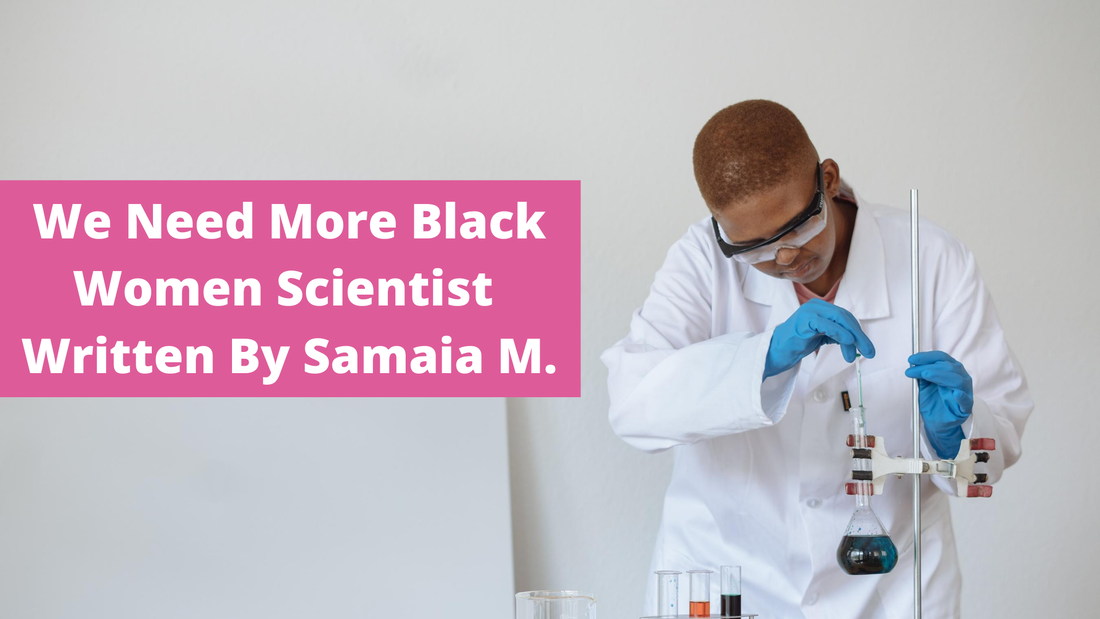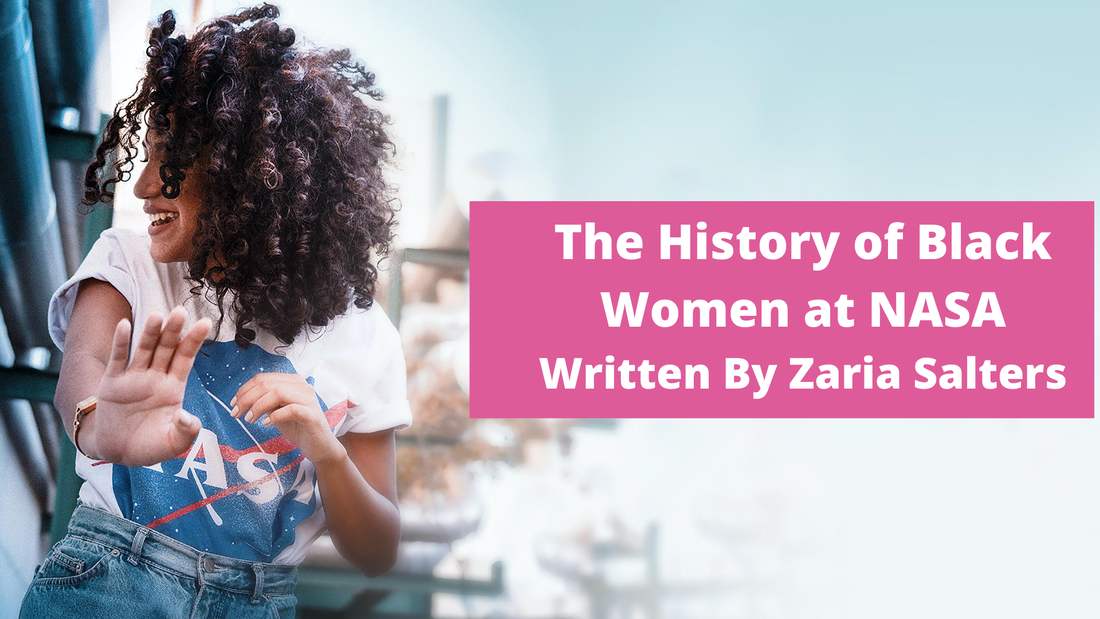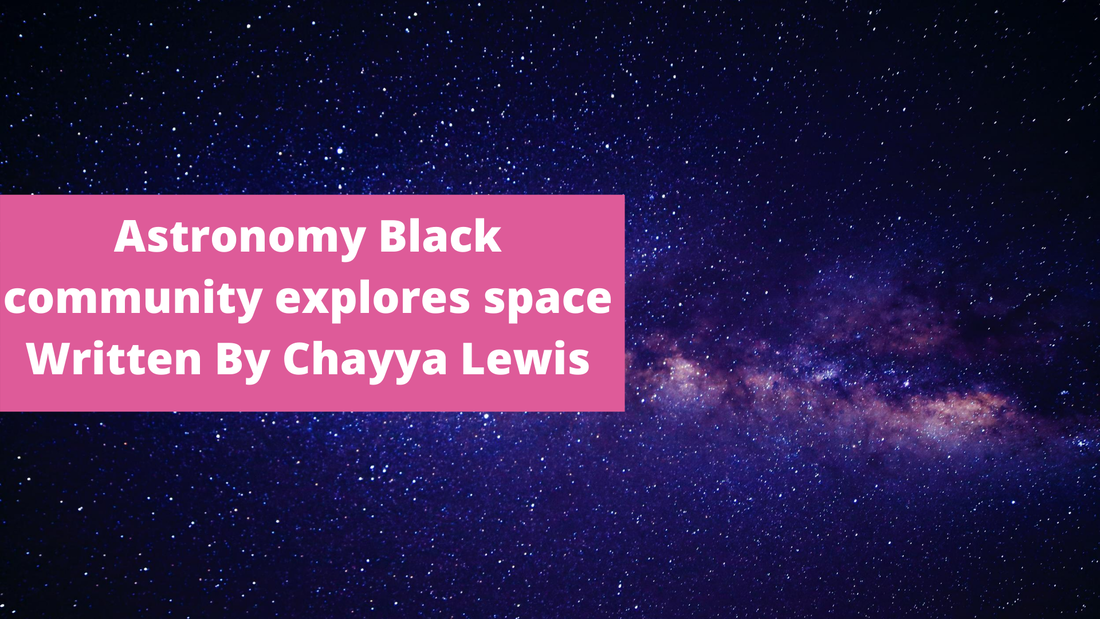|
Please enjoy written pieces by Samia Muhammed, Addison White, Zaria Salters, Sierra Wilkinson and Chayya Lewis. Can you tell me about how many female scientists you know? Good, good, now exactly how many black female scientists you know of? Not that many, right? I am here to tell you that shouldn’t be the case. So, if you’ll allow it, I would like to tell you about two very influential people in the science world. Let’s start off with a young lady named Mae. C Jemison. Now I bet you're wondering “Who’s this so called Mae lady?” Well Mae is the first black female in space. Cool, right!?! Miss Jemison went to space in 1987 when she was only thirty-one. This is where she worked aboard the Space Shuttle Endeavour as a mission specialist. Mae describes her experience in space as being “connected closer to infinity.” Mae C. Jemison is a truly great role model because she saw opportunity to follow her dreams, while also paving the way for many african-american people in the process. Now I thought we could talk about Miss Josephine Silone Yates. An exceptional woman she was. Miss Yates was the first black woman to go on to head a college science department. However she didn't just start there she worked for her place at Lincoln University. After all they can’t make anyone head of the chemistry department. Josephine shows us young female scientists somebody like us in the community and should be appreciated. Written By Samaia M.Marine Biology is my favorite subject. I especially like coral and the way it lives. When I grow up to be a marine biologist I would like to work with coral and other marine invertebrates. When I study marine biology I get really excited. Also because Black individuals get made fun of. When I attend marine biology conferences I don’t see people who look like me and it makes me wonder why I don't see any brown and black people. So I went to research to see If there are some Black marine biologists and there were. I was very happy to find them. I chose Ernest Just because I have done a project about him and I want to dig deeper about what he did. I chose Roger Arliner Young because she is a Black woman and she is very interesting. Ernest Everett Just was the first Black marine biologist. He was born on August 14, 1883, in Charleston, South Carolina. Ernest Just mother said in his young years he was super smart and put him in a white school. He was at the top of his class. The kid in the top of the class gets to make a speech but since he was Black he did not get to do it. His first job right out of college was working at the traditionally all-black school Howard University. Later in life he won the NAACP’s first Spingarn Medal for Outstanding Achievement by a Black American. Ernest Just got married and had kids. He died of cancer on October 27, 1941. Roger Arliner Young is a Black woman born in Clifton Forge Virginia 1899 she grew up in Burgettstown, Pennsylvania she got into Howard in the zoology department. She took her first science course with Ernest Just as her teacher at Howard. She graduated with a bachelor’s degree in 1923. Later in her life Ernest Just asked her to work with him during the summers at the marine biological laboratory. Ernest Just called her “real genius of zoology”. She died November 9, 1964. I am very happy to see someone like me because this is my dream job and sometimes Black individuals get made fun of. She is very inspiring to me because I am I black girl with dreams. These stories of Black marine biologists are amazing. This makes me want to work even harder. This is important to me because other black kids may not know about marine biology. I think it is important to have kids just like me to be educated about things they did not know. Written By Addison WhiteIn the 1950s the first three black women started working at NASA. Their names were Katherine Johnson, Dorothy Vaughan, and Mary Jackson. When they first started working they were treated terribly because of their skin color and gender. They weren’t allowed to access tools they needed for their job, attend various meetings, nor could they see parts of specific documents. Even though they were treated badly they managed to push through. After President Roosevelt signed Executive Order 8802 prohibiting racial, religious and ethnic discrimination in the defense industry in the country, the Laboratory began recruiting black women to meet the increasing demand for aeronautical research data processing. Dorothy Vaughan was promoted to lead the department in 1949, making her the first black female supervisor on the NACA (National Advisory Committee for Aeronautics). The position of Section Head gave Dorothy unique laboratory-wide exposure and worked with other well-known white women called computers such as Vera Huckel and Sara Bullock on projects such as the compilation of an algebraic methods handbook for calculating machines. Mary Jackson started her engineering career in a time in which female engineers of any ethnicity were uncommon; in the 1950s, she may very well have been the only black female aeronautical engineer in the industry. After two years in the computer stream, Mary Jackson received an offer to work in the Supersonic Pressure Tunnel for engineer Kazimierz Czarnecki, a 60,000 horsepower wind tunnel capable of wiping models of winds hitting twice the speed of sound. Trainees had to take graduate level math and physics in post-work courses provided by the University of Virginia. In 1979, finding that the glass ceiling was the expectation rather than the exception for female professionals at the middle of her career, she made a major transition, leaving architecture and taking a demotion to fill the open position of Langley’s Federal Women’s Program Manager. There, she worked tirelessly to influence the next generation of all NASA's female mathematicians, physicists, and scientists recruiting and promotion. The United States agreed to send people to the moon in 1962. Getting to and from the Moon would require a huge amount of work. NASA would have to solve many, many problems so they decided to form large teams to solve them. Katherine Johnson was researching how geometry could be used for space travel. She worked out the spacecraft's routes to orbit Earth and land on the Moon. NASA used Katherine’s calculations and it worked, her calculations later managed to bring astronauts back and forth to the Moon. Katherine Johnson, Dorothy Vaughan, and Mary Jackson made a massive impact that shaped the way things are today. Without them we wouldn’t have been able to accomplish the things we did. Such as, breaking down barriers for people of color, proving that women are as capable as men and giving them equal opportunities, advancing technology, and being an inspiration to other women and young girls like myself to hopefully be as impactful as they are one day. Written by Zaria SaltersDreams are subconscious stories that our minds make up while we sleep. Dreams can be fun and entertaining, disturbing, or completely bizarre. They can include sounds, images, and other things while you are asleep. You might experience very vivid dreams, which happen during a phase called REM (rapid eye movement) sleep, when your brain is very active. Vivid dreams can be negative, realistic or imaginative. REM sleep happens around every 90 minutes, and may last 20 - 25 minutes. Around 25 percent of an adult's sleep during the night is spent in REM cycles. An adult should get seven to nine hours of sleep each night, which is a lot of time for dreams. Lucid dreams happen when you know you’re dreaming. You’re able to know your thoughts and emotions while the dream is happening. Sometimes you can control the lucid dream. You may be able to change the story line, the people or environment during your lucid dream. Lucid dreams also happen during REM sleep. 55 percent of people have experienced lucid dreams. But having lucid dreams frequently is rare. Some nightmares are just bad dreams. But, having a nightmare can affect you. Causing fear, terror, anxiety. It can also include insomnia, or other types of sleeping disorders. Nightmares normally happen during the late hours of REM sleep. Written By Sierra WilkinsonDid you know there have been thirty-three people from the black community to pursue a career in astronomy.Those thirty three people are made up of twenty six men and seven women. All of these people studied different topics in astronomy so there might’ve been a difference in the a,punt of discoveries made by two genders. Currently black astronomers in general haven’t been recognized enough,for their discoveries and studies. There are some extraordinary male astronomers like Gibor Basri who is a Berkeley professor who has written the most published papers on ”Brown Dwarfs” as well as Harvey banks who was the first African-American to earn a PhD in astronomy. Don’t forget Neil Degrasse Tyson who is a first rate astrophysics scholar and director of the Hayden Planetarium. Tyson’s research has focused on observations in cosmology, Stellar evolution, Galactic astronomy, bulges,and stellar formation. These are just a few male astronomers who have made great impacts with their discoveries in learning about space. Beth Brown was a black female NASA astronomer who capitalized on her PhD in astronomy. Barbara A.Williams was the first black female to get a PhD in astronomy; she got the NSBP honor and Outstanding Young Women of America honor in 1986. Dr. Reva Kay Williams is the first person to successfully work out the Penrose Mechanism to extract energy from a black hole. She is the first Black American female to get a PhD in Astrophysics.These accomplishments show that women in astronomy did common things and got a little more recognition because they are female in a mostly male environment. This is important because presently we need more gender and race diversity in some work places especially when it consists of only white men. Now there are more people both men and women coming from the black community to get into astronomy and they need a little more support nowadays to get there.“I also want to make sure that people pay attention to the science [that Black astronomers practice] and say, ‘Hey, that person is a good fit for my group,’and reach out to these students.”These words are from an interview on Karen Kwon who recently earned her PhD in chemistry from Columbia university. In conclusion there are many African American men and women in astronomy who have written papers that give more information on their studies and there is more support for people now to get into astronomy.It is important that these astronomers exist because they are examples for future astronomers coming from the black community. We need to have more black astronomers because if you go to search up black astronomer’s discoveries all you will find is studies on black holes. This matters because there are only one or two websites where you can find information on past black astronomers and how to help future astronomers from the black community this means we need to make black astronomers more recognized and appreciated in the future. Written By Chayyah Lewis
0 Comments
Leave a Reply. |
Archives
May 2022
|






 RSS Feed
RSS Feed